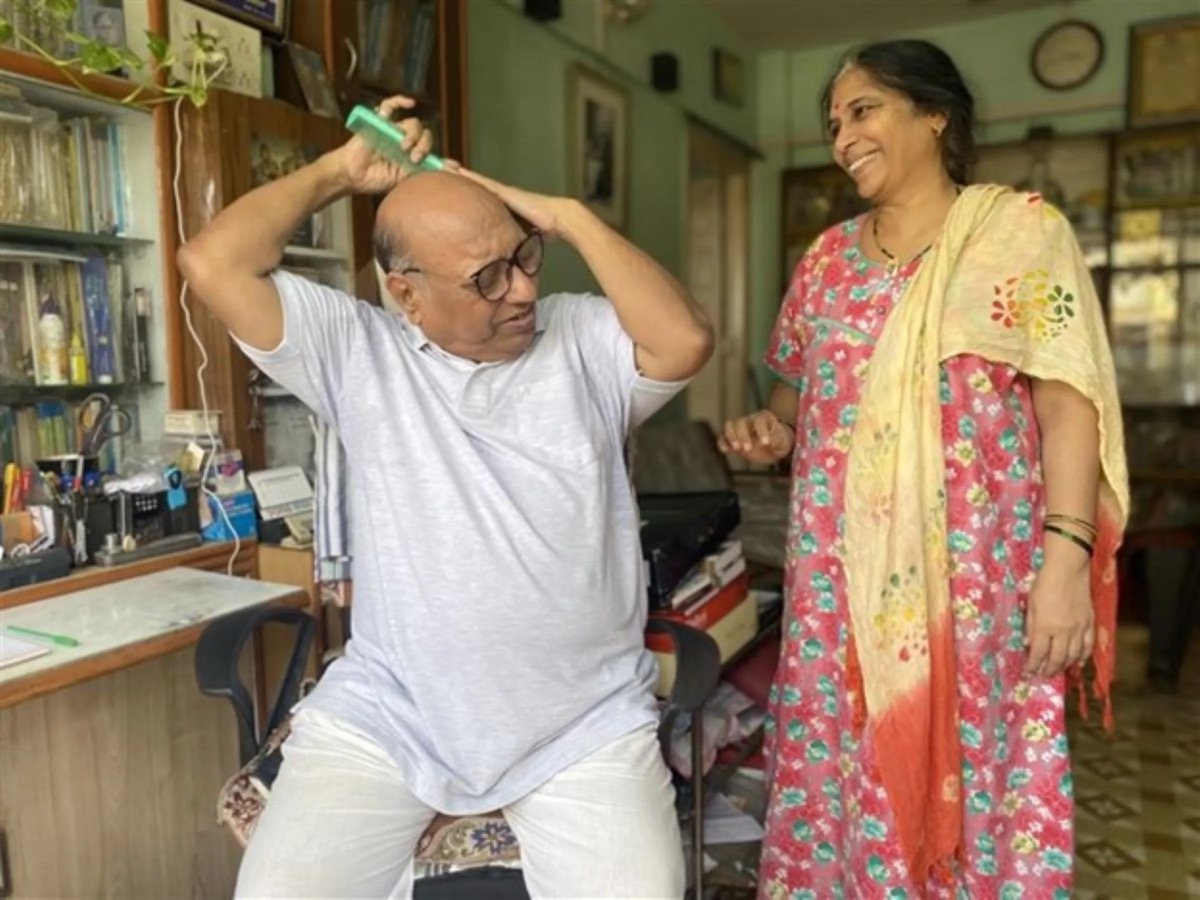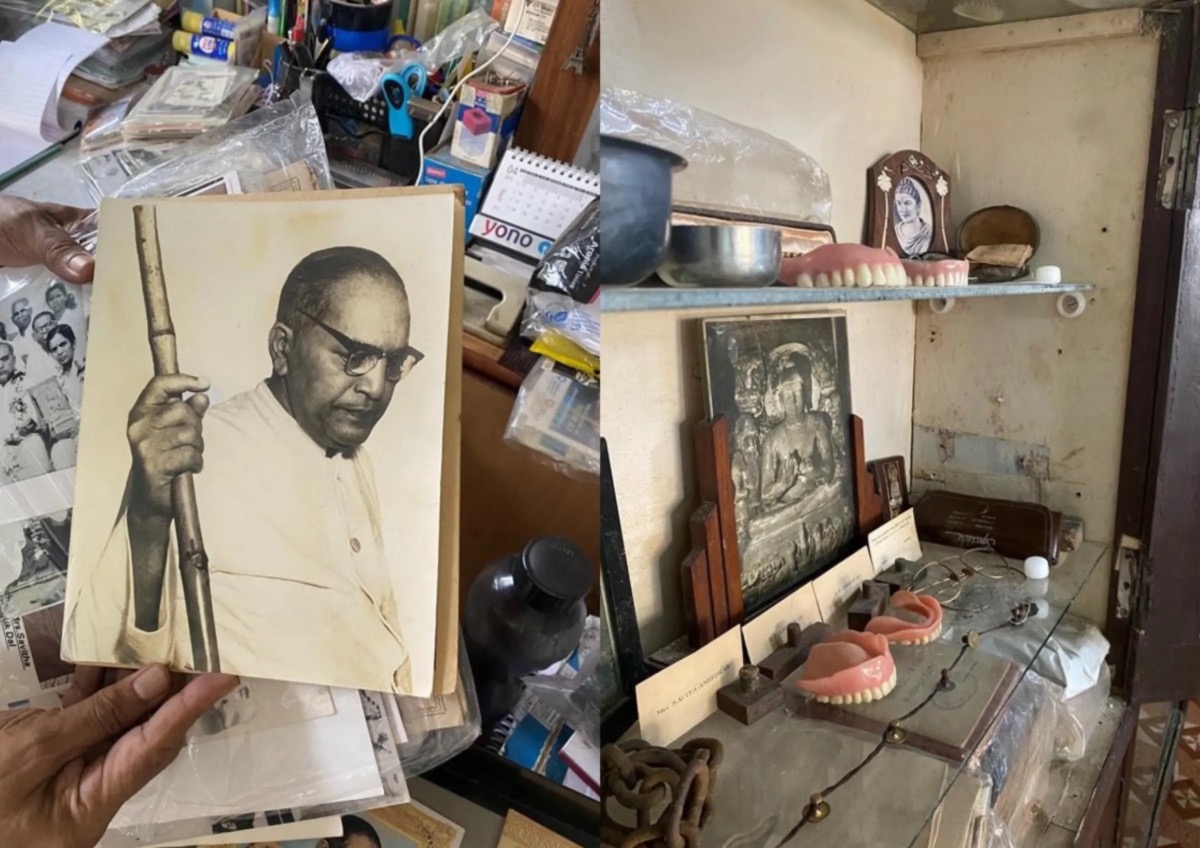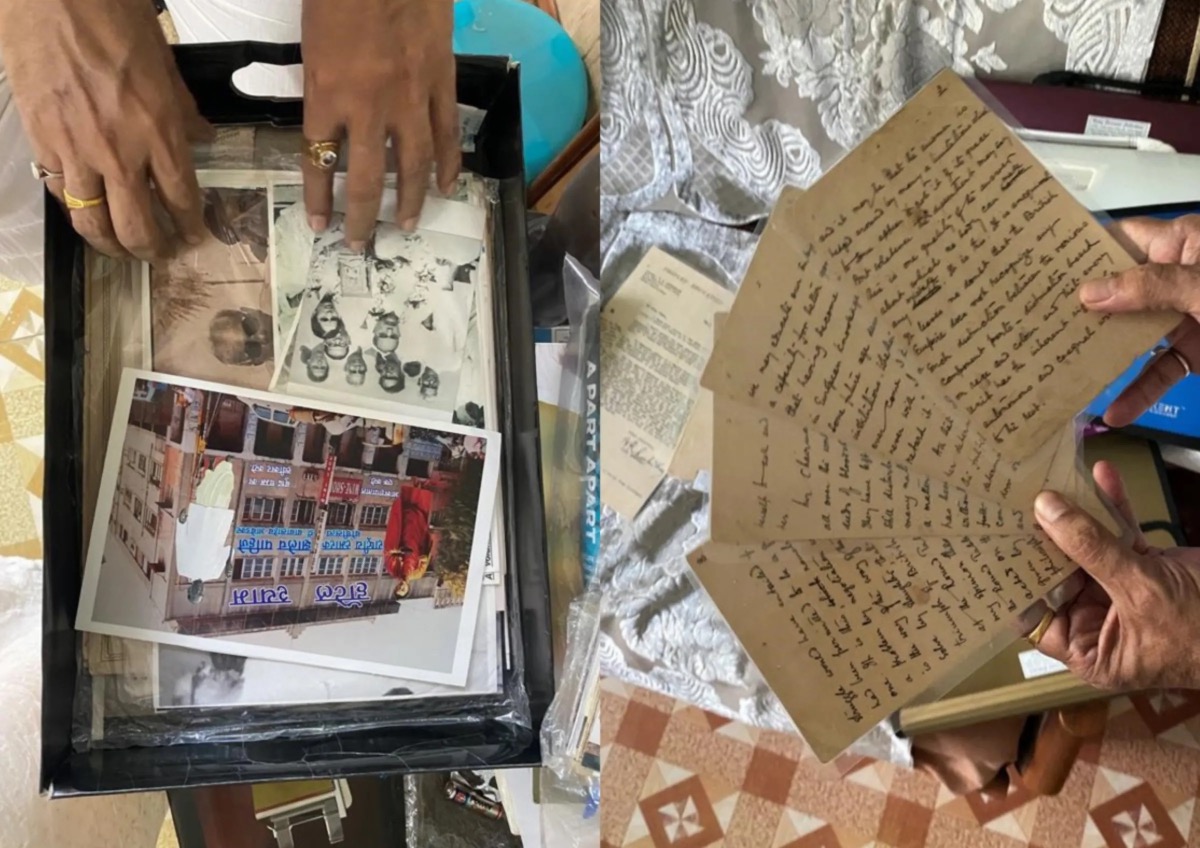
Dalits say their history is neglected by Indian institutions – so they are combing home collections to build their own archives. VIDHI DOSHI, of Thomson Reuters Foundation, reports…
Mumbai, India
Thomson Reuters Foundation
Vijay Surwade may have worked as a bank manager by day – but for five decades he spent his evenings building one of the world’s biggest archives dedicated to India’s pioneering Dalit rights campaigner BR Ambedkar.
His collection includes everything from documents and photos to Ambedkar’s broken spectacles and dentures, all housed in shoe boxes and concertina files in Surwade’s apartment in the western city of Kalyan, about 45 kilometres north-east of Mumbai.

Dalit archivist Vijay Surwade and his wife Mangala talk in their apartment in Kalyan on 11th May, 2023. PICTURE: Thomson Reuters Foundation/Vidhi Doshi
It is among a number of informal archives collected by ordinary Dalit people who say their stories otherwise risk being lost, undermining their cultures and the fight against caste-based discrimination.
“This is our history. No-one else will preserve it. Other people are not interested,” Surwade said, rifling through a shirt box full of old photographs.
“This is our history. No-one else will preserve it. Other people are not interested.”
– Dalit archivist Vijay Surwade
“I thought someone should do it, and then I thought that someone should be me.”
Dalits, formerly known as untouchables, are at the bottom of the caste hierarchy. As untouchables, they were labeled as impure and anything they touched was considered contaminated.
Mumbai-born politician, lawyer and campaigner Ambedkar is the community’s most famous leader. A fierce critic of caste systems, he led a national movement pushing for Dalit rights.
Ambedkar escaped poverty to train as a lawyer in Britain and became India’s first law minister after the country gained independence in 1947. He led the drafting of the constitution, adopted in 1950, which abolished the untouchable designation.
Despite a ban on discrimination and quotas mandating Dalit inclusion in education and government, caste-based discrimination remains widespread in India.
Dalits are 16.6 per cent of India’s population according to the 2011 census, and still face violence and marginalisation, especially if they are seen to break caste barriers. Many are forced to do unsanitary work such as handling human waste.

A photograph of Dalit leader Babasaheb Ambedkar’s ‘diksha’ ceremony after his conversion to Buddhism (right) and his dentures, spectacles and violin strings collected and stored by Vijay Surwade in his Kalyan apartment on 11th May, 2023. PICTURE: Thomson Reuters Foundation/Vidhi Doshi
As a Dalit, Surwade has experienced this discrimination first-hand. As a child he was labelled an “achoot”, a slur meaning untouchable. As an adult, he saw fellow Dalits being held back from job opportunities and promotions.
It was worse for his parents and grandparents, who were excluded from schools and forbidden from drinking from the village well, he said.
“If they did, they were beaten like animals,” Surwade said, adding that he feels indebted to Ambedkar for creating the anti-caste movement which has made his life so much better than that of his parents.
The latest ministry of education data shows that 5.9 million Dalit students were in higher education in 2021, up from 4.6 million in 2015 – almost meeting the government quota of 15 per cent.
But on campus, Dalit students continue to face exclusion, including harassment and caste-based slurs from their peers, according to reports in Indian media.
Yashashwani Srinivas, 26, a doctoral student researching Dalit rights in her southwestern home state of Karnataka, said she had chosen to study in Britain after encountering dismissive attitudes to Dalit research in Indian universities.
“[Indian universities] always have second thoughts when its anything to do with a Dalit movement,” she said.
Srinivas, who is studying at the University of Leeds, is collecting and digitising copies of a Dalit movement magazine called Panchama printed in the 1970s and 1980s.
She began the project with copies collected by family members who were involved in the Dalit movement in Karnataka.
There are memorials to Ambedkar in several cities including Delhi and Lucknow, and Dalit campaigners have called for a caste museum.
But Dalit histories and figures are routinely neglected as Dalit academics often struggle to keep their jobs, said S Anand, an anti-caste campaigner and director of publishing house Navayana.
“Mainstream academia barely makes room for Dalits,” he said, adding that most Dalit archivists are collecting and writing caste history from the sidelines of Indian academia.
“Even the history of the modern period is often lost…What survives owes totally to Dalit efforts.”
There could be thousands of “unknown, unheralded” amateur Dalit archivists like Surwade across India, he said.
“Shamefully, we have little or no idea,” he said.
“These collectors are often self-trained and have no funds for even the upkeep of the treasures kept in their congested homes. In the West, universities would by now have come forward with ways of preserving and sharing these. Here, apathy is all we get.”
We rely on our readers to fund Sight's work - become a financial supporter today!
For more information, head to our Subscriber's page.
Surwade used his own savings, taking buses and trains to faraway cities and combing through slums in his free time to build his collection, eventually publishing correspondence, speeches and photographic biographies of the leader.
Ambedkar scholars from around the world visit his apartment to look through his archive, said Surwade, who is now retired.

Dalit archivist Vijay Surwade has collected documents, private correspondence and hundreds of original photographs of dalit leader Babasaheb Ambedkar stored in shirt boxes in his Kalyan apartment, on 11th May, 2023. PICTYURE: Thomson Reuters Foundation/Vidhi Doshi
Mumbai-based Dalit archivist and artist Shrujana Niranjani Shridhar, 30, uncovered suitcases full of historically valuable materials in homes while researching a documentary about the Dalit Panther movement of the 1970s.
The activist group, which took inspiration from the Black Panther Party in the United States, staged protests against caste-based oppression and defended the use of violence to fight for their rights.
“These [archives] were informal collections in people’s homes. People have kept it in very good condition – books, pamphlets, since the fifties,” said Shridhar.
Shridhar began digitising the materials, and has secured a grant to fund her work from an Indian non-profit, the Sher-Gil Sundaram Arts Foundation.
“We have struggled to find belonging, historically speaking…We don’t have generational wealth or property. If we don’t do this, what resources are we left with to survive?” she asked.
“We are responsible for big pieces of history in this country and in this culture, and those are places to draw pride from.”






